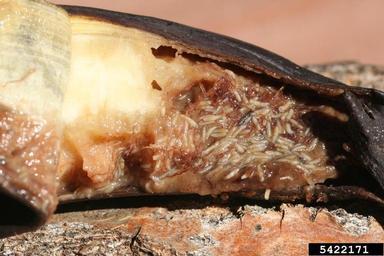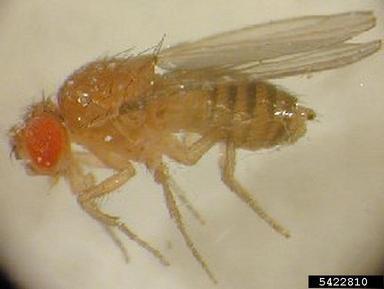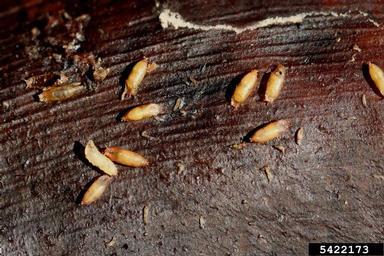Biology
While spotted wing drosophila is a primary pest of strawberries and other soft skinned fruits, meaning it attacks otherwise undamaged fruit, many species of native, non-pest Drosophila may feed on fruit that has been previously damaged. Other Drososphila species are unable to penetrate the surface of sound fruits and must wait until the fruit rot or are damaged by other causes, such as pathogens, mechanical injury, or other insects.
Damage in Strawberry
Drosophila larvae feed and pupate internally in damaged strawberries.
Scouting and Thresholds
Non-spotted wing drosophila Drosophila larvae are typically present in fruit that have already been damaged. Because these fruit have already been damaged by some other cause, there is no management threshold.
Management Options
Cultural control, specifically thorough, removal of damaged fruit, is the best and only recommended means to control native, non pest Drosophila.
Publication date: July 9, 2014
Reviewed/Revised: Jan. 2, 2025
N.C. Cooperative Extension prohibits discrimination and harassment regardless of age, color, disability, family and marital status, gender identity, national origin, political beliefs, race, religion, sex (including pregnancy), sexual orientation and veteran status.



